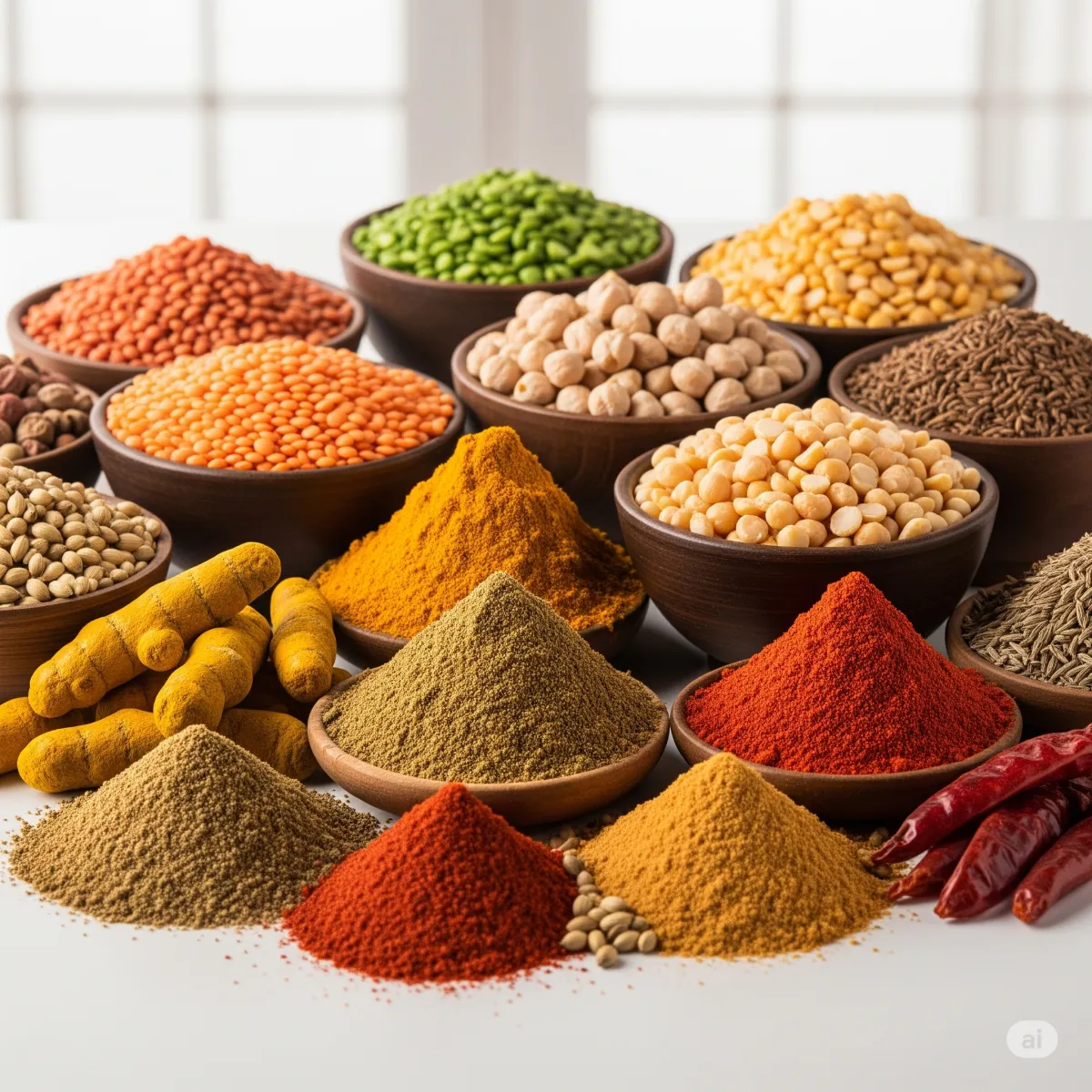
Welcome to Consult Kriba Blog

Export Opportunities for Pulses and Spices from India
Export Opportunities for Pulses and Spices from India
India is one of the world’s largest producers and exporters of agricultural products. Among them, pulses and spices are in high demand globally. This blog will help you understand the export potential of these products in a clear, step-by-step manner.
1. Top Countries to Export Pulses
India grows many types of pulses like chickpeas, lentils, pigeon peas, mung beans, and urad dal. Despite being a major producer, India also imports pulses, showing strong local demand.
Here are the top countries with high demand for pulses:
India – Imported over 6.5 million tonnes of pulses in 2024-25.
Mexico – Imported $270 million worth of pulses.
European Union – Imported $130 million from the U.S. alone.
Canada – Despite being a top producer, it still imported $213 million.
China – Imported $43 million, and demand is growing.
2. Pulses: Market Trends
The global market size was around $78 billion in 2024, expected to reach $135 billion by 2034.
People are eating more pulses due to interest in plant-based protein.
Though farming is seasonal, processed pulses are in demand all year round.
3. Competition and Pricing in Pulses
Major exporters: Canada, Australia, Myanmar, and Russia.
Prices change depending on crop yield and demand. For example, lentil prices average about $0.64 per unit.
4. Export Challenges for Pulses
Logistics: Shortage of containers and delays at ports.
Solution: Use reliable shipping partners and plan ahead.
Tariffs: Countries impose different tariffs.
Solution: Check for free trade agreements.
Quality Standards: Exporters must meet food safety standards.
Solution: Follow Good Agricultural Practices (GAP) and get certifications.
5. Spices: Best Export Markets
India is the world’s largest producer and exporter of spices. The top countries importing Indian spices are:
United States – Biggest market, imported over $422 million worth.
Netherlands – Key distribution point for Europe.
Germany, UK, and France – All show increasing demand.
6. Spices: Market Trends
The global market size reached $24.5 billion in 2024, with expected growth to $34 billion by 2030.
There is a rising demand for organic, chemical-free spices.
Ethnic cuisine trends are pushing up demand for Indian spices.
7. Competition and Pricing in Spices
Main competitors: Vietnam, China, Indonesia, and Sri Lanka.
Prices are rising due to climate impacts and supply shortages. For example, black pepper prices tripled since 2023.
8. Export Challenges for Spices
Quality issues: Some Indian spice consignments were rejected due to contamination.
Solution: Use strong quality control systems.
Trade barriers: Some countries impose high duties or strict rules.
Solution: Stay updated on rules and seek support from councils.
High competition: Other countries are improving their spice exports.
Solution: Focus on high quality, strong branding, and unique blends.
9. Export Promotion Councils
For exporters from India, the following councils can help:
APEDA – For pulses and processed food products.
Spices Board India – For all kinds of spices, including value-added products.
These organizations offer help with certification, subsidies, and marketing support.
10. HS Codes You Should Know
When exporting, use the correct HS (Harmonized System) Codes for customs and documentation. Here are some common ones:
Pulses:
0713.10 – Peas
0713.20 – Chickpeas
0713.31 – Mung/Urad beans
0713.40 – Lentils
Spices:
0904 – Pepper
0905 – Vanilla
0906 – Cinnamon
0907 – Cloves
0908 – Nutmeg, mace, cardamoms
0909 – Anise, cumin, fennel, coriander
0910 – Turmeric, ginger, saffron, curry